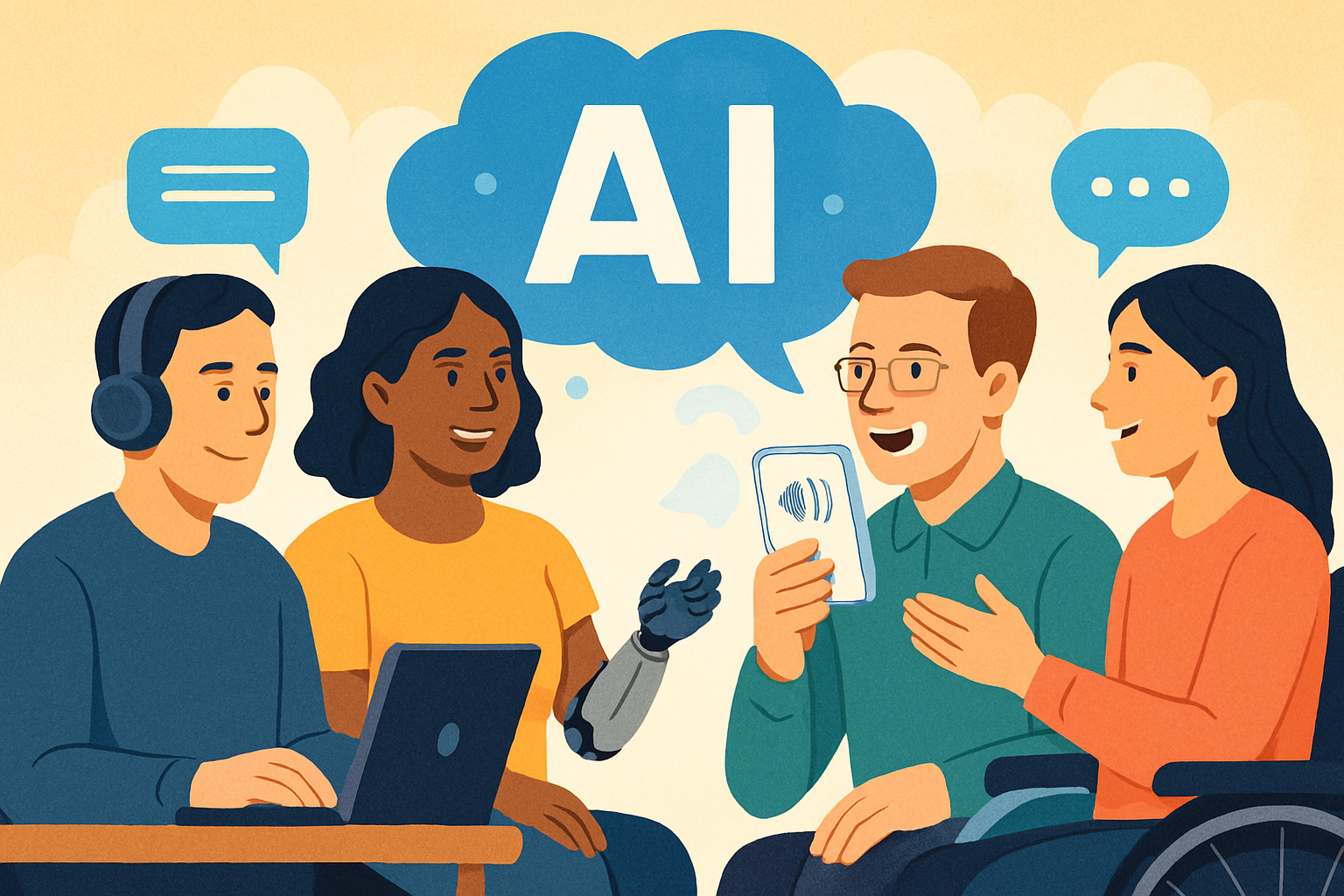
AI for Accessibility: How Technology is Empowering People with Disabilities
Introduction: AI Creating a More Inclusive World
Artificial Intelligence (AI) is emerging as a transformative technology with the profound potential to create a more inclusive and accessible world for people with disabilities. By powering innovative assistive tools and adapting digital environments, AI can help break down barriers that have long hindered participation in various aspects of life, from communication and education to employment and daily living. This article explores the diverse ways AI is being leveraged to empower individuals with visual, hearing, speech, mobility, and cognitive disabilities, highlighting key applications, specific tools (with potential affiliate opportunities for relevant software or devices), and the ongoing challenges in ensuring these solutions are equitable and effective.
AI for Visual Impairment: Seeing the World Through Technology
AI-powered tools are providing unprecedented assistance to individuals who are blind or have low vision.
- Object and Scene Recognition: Apps can use a smartphone camera and AI to identify objects, read text aloud (from signs, documents, product labels), recognize faces, describe scenes, and even identify currency.
- Leading Tools (Examples & Affiliate Opportunity):
- Seeing AI (Microsoft): A free app that narrates the world around the user.
- OrCam MyEye: A wearable device that clips onto glasses and provides similar functionalities. (Affiliate programs may exist for such assistive devices.)
- Leading Tools (Examples & Affiliate Opportunity):
- Navigation Assistance: AI can power apps that provide audio-based navigation for visually impaired individuals, helping them navigate unfamiliar environments more confidently.
- Accessible Digital Content: AI can help generate alt text for images on websites and in documents, making visual information accessible through screen readers.
AI for Hearing Impairment: Bridging Communication Gaps
AI is enhancing communication for individuals who are deaf or hard of hearing.
- Real-Time Captioning and Transcription: AI-powered services can provide accurate, real-time captions for live conversations, videos, lectures, and meetings, making spoken content accessible.
- Sign Language Translation (Emerging Technology): Researchers are developing AI systems that can translate spoken or written language into sign language (via an avatar) and vice-versa. While still in development, this holds immense promise.
- Alerting Systems: AI can be integrated into smart home devices or wearables to alert individuals with hearing impairments to important sounds like doorbells, smoke alarms, or a baby crying, often through visual or haptic feedback.
AI for Speech Impairment: Giving Voice to Everyone
For individuals with speech impairments due to conditions like ALS, cerebral palsy, or stroke, AI is offering new ways to communicate.
- Personalized Speech Recognition: AI models can be trained on non-standard speech patterns to understand individuals whose speech might be difficult for typical speech recognition software or other people to comprehend.
- Leading Tools (Examples):
- Google Project Relate: An Android app that learns to understand unique speech patterns.
- Voiceitt: An app that translates non-standard speech into clear, synthesized speech in real-time.
- Leading Tools (Examples):
- Augmentative and Alternative Communication (AAC) Enhancement: AI can improve AAC devices by predicting words or phrases, making communication faster and less laborious.
AI for Mobility Challenges: Enhancing Independence and Control
AI is being integrated into technologies that assist individuals with physical disabilities, enhancing their mobility and control over their environment.
- Smart Wheelchairs: AI can enable wheelchairs to navigate autonomously, avoid obstacles, and be controlled through various inputs like voice commands, head movements, or even brain-computer interfaces (BCIs).
- AI-Powered Prosthetics and Exoskeletons: Machine learning algorithms allow prosthetic limbs to learn and adapt to the user’s movements, providing more natural and intuitive control. Exoskeletons with AI can assist individuals with paralysis to stand or walk.
- Voice-Controlled Home Assistants and Environmental Controls: AI-powered smart home devices (e.g., Amazon Alexa, Google Assistant) allow individuals with limited mobility to control lights, thermostats, entertainment systems, and other appliances using voice commands.
AI in Creating Accessible Digital Content and Environments
Beyond specific assistive devices, AI can play a role in making the broader digital and physical world more accessible.
- Web Accessibility Evaluation Tools: AI can help developers identify and fix accessibility issues on websites, ensuring they are usable by people with various disabilities (e.g., checking for sufficient color contrast, proper heading structures, ARIA attributes).
- Cognitive Accessibility: AI research is exploring ways to adapt content complexity or presentation for individuals with cognitive disabilities, though this is a nuanced area requiring careful design.
Challenges and Considerations in AI for Accessibility
While the potential is vast, several challenges must be addressed:
- Inclusivity in Design and Data: AI solutions must be designed with direct input from people with disabilities to ensure they meet real-world needs. Training data for AI models must be diverse to avoid bias and ensure tools work well for everyone.
- Affordability and Availability: Many advanced assistive technologies can be expensive. Efforts are needed to make these solutions more affordable and widely available.
- Digital Divide and Training: Access to technology and the internet, as well as training on how to use these tools, can be barriers for some individuals.
- Privacy and Ethical Use of Data: As with all AI applications, data privacy and ethical considerations are paramount, especially when dealing with sensitive personal information related to disabilities.
Conclusion: AI as a Force for Empowerment
Artificial Intelligence holds incredible promise as a powerful force for breaking down barriers and enhancing the independence, productivity, and quality of life for people with disabilities. From providing new ways to perceive and interact with the world to making digital environments more inclusive, AI-driven assistive technologies are already making a significant impact. As development continues, a commitment to inclusive design, ethical considerations, and equitable access will be crucial to fully realize AI’s potential to empower individuals of all abilities and foster a truly accessible society. Affiliate marketing in this space should focus on reputable, user-vetted, and ethically developed assistive technologies and software.

Leave a Reply